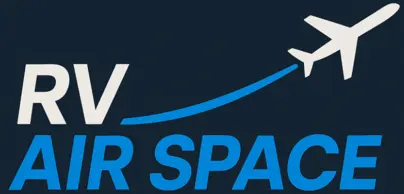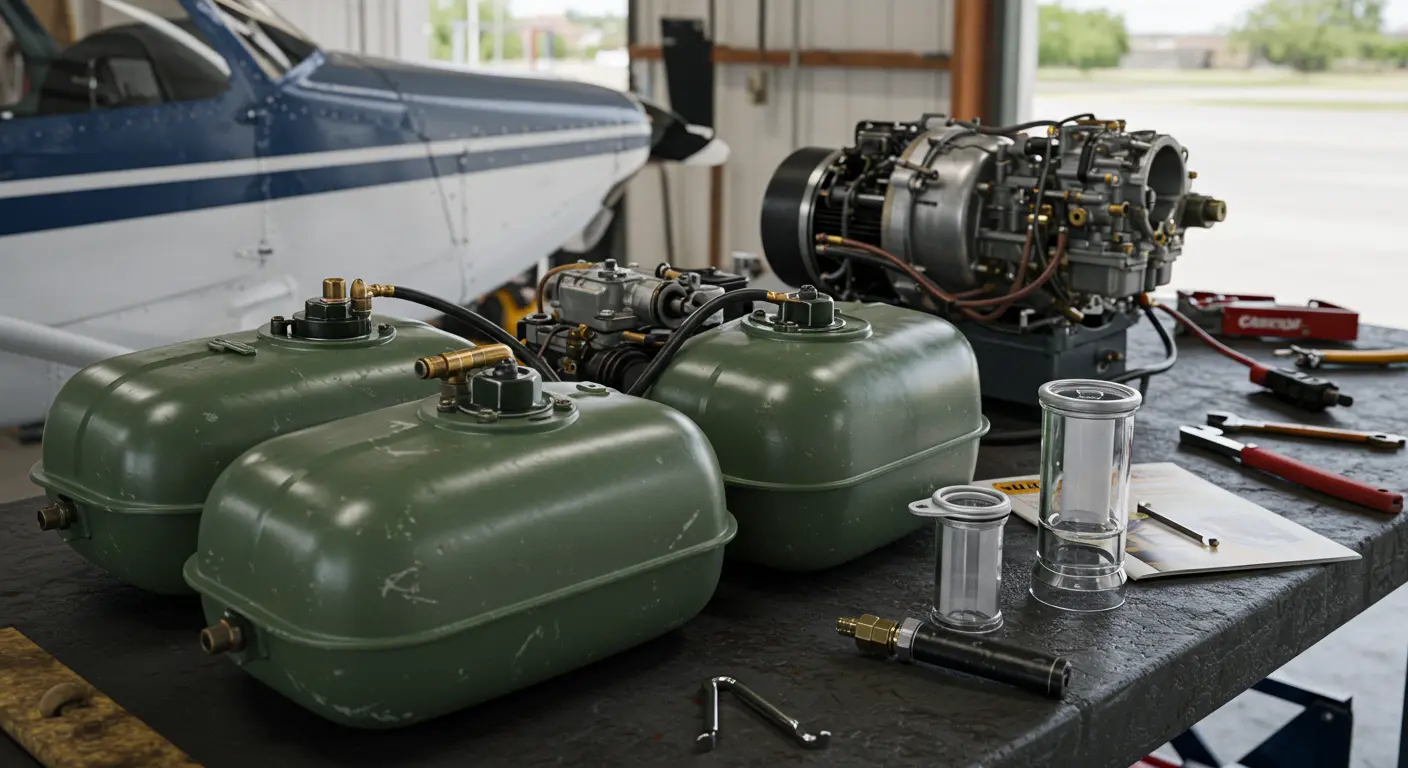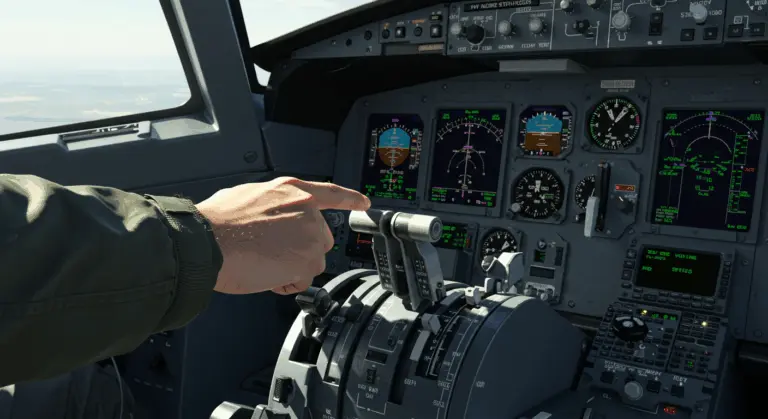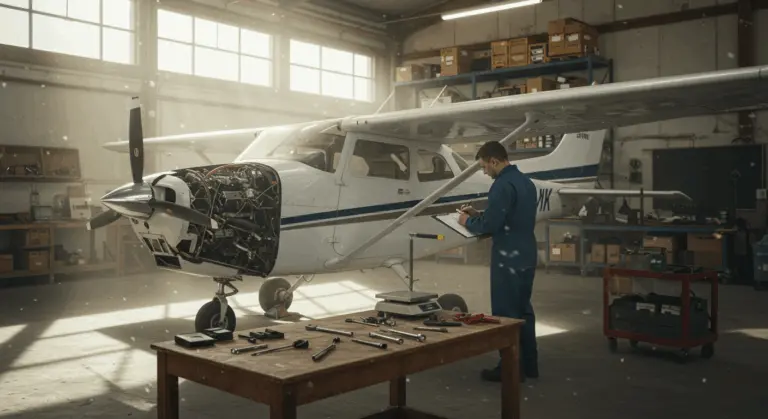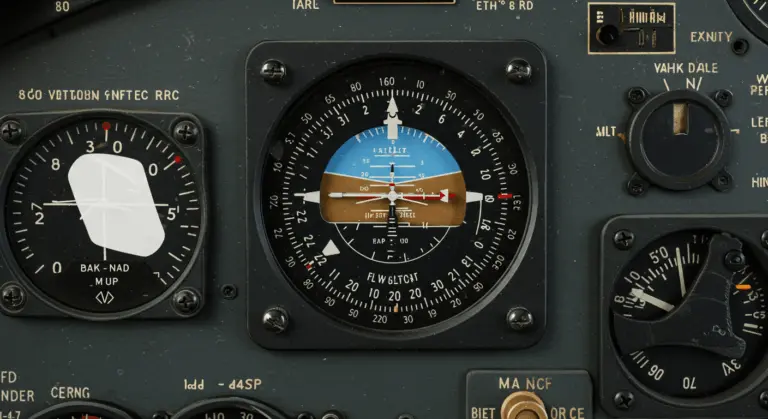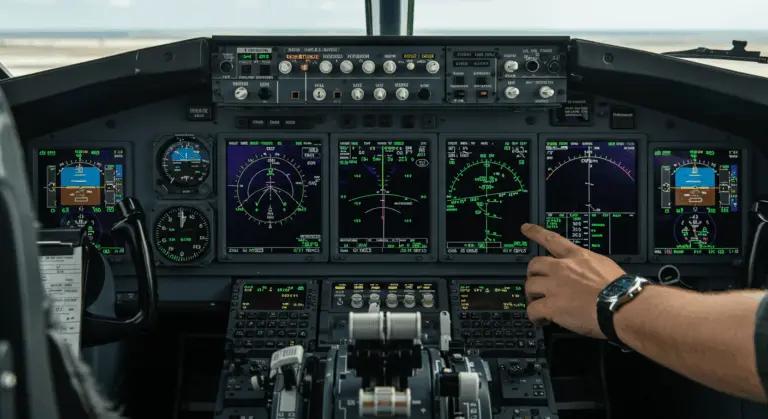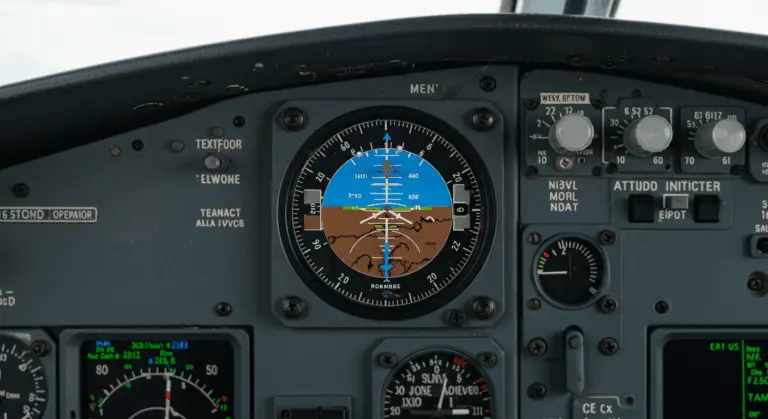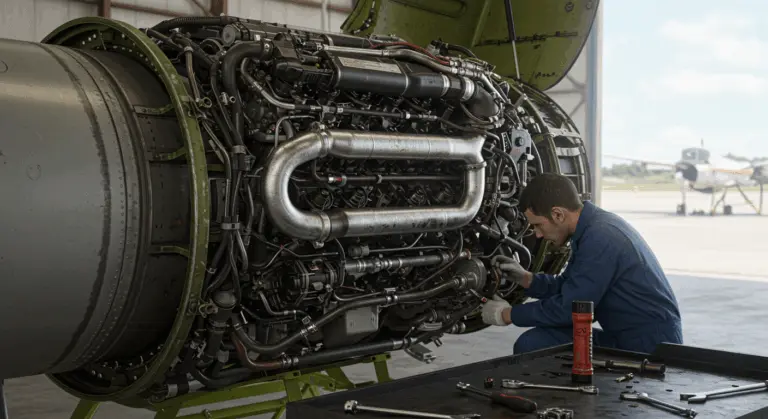Understanding the Cessna 172 Fuel System
Overview of the Cessna 172 Fuel System
The Cessna 172’s fuel system demonstrates elegant simplicity through its gravity-fed architecture. Two wing-mounted tanks work in harmony with fuel lines, pumps, and filters to deliver fuel to either a carburetor or injection system, depending on the specific model variant. This proven design has shown exceptional reliability across decades of service in what remains one of aviation’s most beloved aircraft.
The standard Cessna 172 features two wing-mounted fuel tanks, each with a capacity of 28 gallons, providing a total fuel capacity of 56 gallons. With 53 gallons usable for flight operations. This capacity, combined with the aircraft’s fuel efficiency, provides excellent operational range. At a typical cruise speed of 122 knots (140 mph), the aircraft can travel between 640-800 nautical miles on a full tank, translating to roughly 4–5 hours of flight time.
The brilliance of the Cessna 172’s fuel system stems from its gravity-fed simplicity. The aircraft’s high-wing configuration uses gravity’s natural force, drawing fuel from the tanks to the engine while minimizing mechanical complexity and potential failure points. A strategically positioned four-position fuel selector valve gives pilots precise fuel source management.
Essential components work together to ensure reliable fuel delivery: a fuel strainer effectively removes contaminants, while an engine-driven pump maintains consistent pressure throughout the system. An electric auxiliary pump stands ready for starting procedures and emergency backup situations. Under typical operating conditions, the Cessna 172 consumes approximately 9.8 gallons per hour, though actual consumption fluctuates based on environmental factors, aircraft weight, and operational altitude.
Model variations introduce different fuel delivery philosophies. Some Cessna 172s employ a traditional carburetor system that carefully blends fuel with incoming air before distribution to the engine cylinders. Others feature fuel injection systems that deliver measured fuel directly into the combustion chambers. Both approaches have earned their reputation for dependability, though each presents unique operational nuances that pilots must master.
Components of the Cessna 172 Fuel System
The system’s foundation consists of two vented, integral fuel tanks—one nestled within each wing—each capable of holding 28 gallons. These vents serve an important purpose: preventing vacuum formation while maintaining proper pressure equalization throughout all flight phases.
The four-position selector valve gives pilots direct control over fuel sourcing, enabling them to draw from the left tank, right tank, both simultaneously, or completely shut off the supply when needed. Downstream from this control point, the fuel strainer—often called a calculator—protects the system, filtering out potentially harmful contaminants before they can reach the engine’s delicate components.
Dual pumps ensure redundant fuel delivery capability. The primary engine-driven pump handles normal operations with mechanical reliability, while an electric auxiliary pump provides essential support during engine starts and serves as a crucial backup system. A manual primer complements these pumps by delivering fuel directly to engine cylinders during challenging cold-start conditions.
Cessna 172 Sky hawks can operate on several fuel types, offering flexibility based on availability and environmental factors:
-
100LL (low-lead): The most common type.
-
91UL (unleaded)
-
94UL (unleaded)
-
100VLL (very low lead)
How the Fuel System Works
The Cessna 172’s fuel system operates through a combination of gravity and mechanical precision. The aircraft’s distinctive high-wing configuration uses gravity as a reliable force, allowing fuel to flow naturally downward from the wing-mounted reservoirs—forming the basis of this simple delivery system.
Fuel begins its journey from the wing tanks, following a planned path. Once the pilot selects the desired source via the selector valve, fuel flows toward the strainer, where contaminants are removed through filtration. The journey continues to the engine-driven fuel pump, which maintains steady pressure as fuel approaches its final destination: the carburetor or fuel injection system.
Carburetor models create a careful balance between fuel and air, creating the optimal combustible mixture. This carefully balanced combination then travels to the cylinders, where compression and ignition transform chemical energy into the mechanical power that propels the aircraft through the sky.
Fuel-injected variants use a different approach, utilizing a fuel pump and servo regulator to achieve precise metering based on real-time airflow demands. Rather than pre-mixing in a carburetor, this system delivers fuel with high precision—spraying it directly at each cylinder’s intake manifold for enhanced performance and more consistent power delivery.
Multiple safety mechanisms protect reliable operation. The electric auxiliary fuel pump serves dual roles as both backup protection and starting assistance. Meanwhile, the fuel selector valve enables pilots to maintain optimal aircraft balance by strategically alternating between tanks—a technique that preserves proper weight distribution throughout extended flights.
Fuel Flow and Delivery Mechanisms
Managing Fuel Contamination Risks
Fuel contamination poses a serious threat facing Cessna 172 operations. When water, dirt, or debris infiltrate the fuel system, the consequences can range from gradual power degradation to catastrophic engine failure—making contamination prevention a critical safety priority.
Cessna’s engineers addressed this challenge through smart design. Fuel pickup lines are intentionally positioned slightly above the tank floors, creating a deliberate reservoir of unusable fuel. This design serves an important protective function: heavier contaminants like water and particulates naturally settle into this lower zone, effectively quarantining them from the engine’s fuel supply during normal operations.
Water contamination creates a serious problem, infiltrating fuel systems through multiple pathways: condensation in partially filled tanks, refueling during humid or rainy conditions, or compromised storage facilities at fuel suppliers. Once present, water creates multiple problems—promoting corrosion, potentially freezing at altitude to block fuel lines, or disrupting the combustion process itself.
The fuel strainer acts as the system’s last line of defense against contamination. Strategically positioned at the lowest point in the fuel system, this component uses gravity to collect water and debris before they can threaten engine operation. Its quick-drain valve transforms routine preflight checks into critical safety inspections, allowing pilots to extract and examine fuel samples that reveal the system’s internal condition.
Regular fuel jumping is the pilot’s best defense against contamination. Best practices demand draining samples from every sump point following each refueling and before each day’s initial flight. These samples require careful examination in clear containers, where pilots scrutinize fuel color, detect unusual odors, and search for telltale signs of water separation or particulate contamination.
Best Practices for Fuel System Maintenance
Effective fuel system maintenance demands a systematic approach combining preventive care with vigilant inspection protocols. Pilots and maintenance technicians must establish rigorous schedules for examining potential leak points while carefully monitoring rubber components for signs of age-related deterioration.
Vapor lock—where fuel transforms from liquid to gas within the fuel lines—becomes a significant concern during hot weather operations. Several proven strategies can mitigate this risk: rerouting fuel lines away from heat sources, applying targeted cooling techniques to vulnerable system components, utilizing the electric boost pump during critical flight phases, ensuring proper post-shutdown ventilation by opening vents, and strategically parking aircraft nose-into-wind to promote natural engine compartment cooling.
The fuel strainer demands special attention during maintenance cycles. Regular cleaning of the strainer screen prevents debris accumulation that could restrict fuel flow and compromise engine performance. Maintenance personnel must inspect the strainer bowl for corrosion indicators while ensuring the quick-drain valve operates smoothly without leakage. The gasket sealing the bowl to its housing requires replacement at the first sign of deterioration—preventing both fuel leaks and air infiltration that could disrupt proper fuel delivery.
Fuel tank maintenance extends to the often-overlooked tank vents, which prove critical for proper system operation. Technicians must verify these vents remain clear of insects, debris, or ice formation. Even minor blockages can create vacuum conditions that halt fuel flow entirely.
Meticulous documentation forms the backbone of effective maintenance programs. Detailed records of inspections, component replacements, and service intervals create a historical narrative that helps identify emerging issues before they escalate into critical failures.
Pre-Flight Checks for the Fuel System
Comprehensive pre-flight inspection of the fuel system is essential for flight safety. While cockpit gauges offer convenient reference points, physically verifying fuel levels in each tank remains the gold standard for confirming actual fuel availability.
Contamination detection through systematic fuel sampling is fundamental to pre-flight procedures. Before each day’s first flight and following every refueling, pilots must drain and inspect fuel from multiple critical points: each wing tank sump, the fuel selector valve drain, and the main fuel strainer. Using a transparent container, pilots examine these samples for water contamination, particulate matter, and proper fuel coloration—visual clues that reveal the system’s internal health.
The time-honored G-U-M-P-S checklist (Gas, Undercarriage, Mixture, Propeller, Switches/Seatbelts) serves as an essential pre-landing ritual for fuel system management. During this critical check, pilots verify proper fuel selector valve positioning to ensure fuel draws from the appropriate tank. This practice proves especially vital in the Cessna 172, where strategic fuel management maintains aircraft balance while guaranteeing uninterrupted fuel flow to the engine.
Functional testing of the electric auxiliary fuel pump should occur during engine start procedures. After achieving stable engine operation, pilots must verify continued smooth running when the electric pump switches off—confirming that the engine-driven mechanical pump operates correctly. Additionally, monitoring fuel pressure indications (when equipped) provides valuable confirmation of normal fuel system performance.
A thorough pre-flight inspection encompasses examining fuel tank vents located on each wing’s underside. Pilots must confirm these vents remain unobstructed by debris, insects, or ice formation. Finally, inspecting the ground beneath the aircraft for fuel stains or active leaks completes the comprehensive fuel system evaluation.
Understanding Fuel Selector Valve Function
Positioned strategically on the cabin floor between the front seats, this valve gives pilots precise fuel supply management by selecting which tank feeds the engine. The standard Cessna 172 selector features four distinct positions: LEFT, RIGHT, BOTH, and OFF. This setup provides complete control over fuel management throughout every phase of flight operations.
LEFT or RIGHT positions direct fuel exclusively from the corresponding wing tank to the engine. This selective capability serves multiple strategic purposes—pilots can balance the aircraft during extended flights by alternating between tanks, maintaining optimal weight distribution and preserving ideal handling characteristics. The BOTH position simultaneously draws fuel from both wing tanks, typically recommended for critical flight phases like takeoff and landing to ensure maximum fuel availability when it matters most.
The OFF position completely halts fuel flow to the engine, serving as an essential safety feature during emergencies or aircraft securing procedures. Proper selector operation requires deliberate pilot action—the handle must be pushed down to release it from its detent before rotation to the desired position, ensuring positive engagement upon release. This mechanical safeguard prevents accidental selector movement during flight due to vibration or inadvertent contact.
Effective fuel management demands strategic thinking from pilots. During cruise flight, operating handbooks typically recommend hourly tank switching to maintain balanced fuel loads and optimal aircraft handling. Pilots must also account for unusable fuel—since pickup lines sit slightly above tank bottoms to avoid drawing contaminants, a small quantity remains inaccessible during normal operations.
